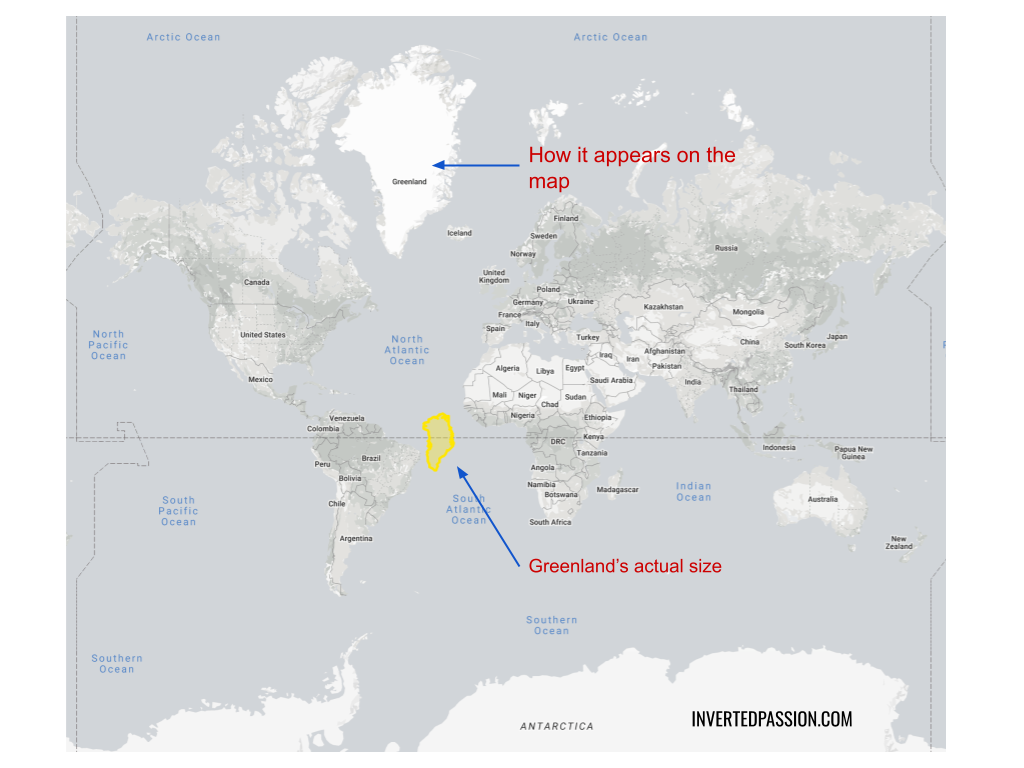Imagine you are tasked with making a map of the world. How would you go about it? Think about this problem for a moment before reading on.

Perhaps you’d start with a stable reference point – like the North Pole – and start surveying Earth’s topography around it. Or you’d rely on the satellite imagery to gather the raw data. But regardless of what’s the source of your data, pretty soon you’d run into a challenge. Earth is a 3D surface, while you’re asked to prepare a 2D map. There is no simple way to present 3D information in 2D without losing fidelity of actual information.
And that is what actually happens with the world map we’re so regularly exposed to. Since the 3D surface is stretched onto a 2D sheet, it expands land masses near the poles. Greenland appears much bigger than the US, but is actually just 20% of its size.
Why are maps dangerous when taken literally? Imagine that in a quiz you blurt out that Greenland is bigger than the US because you’ve seen the world map. You’ll just embarrass yourself.
Everyone has maps of different kinds inside their head. We have maps of culture, technology, industries, and people. Our maps help us plan and predict consequences of our actions. Our opinions are based on what we see in such maps. Maps are obviously useful, but they’re often wrong because no matter how hard you try, they’d never be able to capture reality in its full glory.
While there is no way to avoid maps – reality will overwhelm us – it is important to always keep in mind that what we’re using for decisions is a map and not the reality. Some of the biggest errors and blunders happen when we confuse the map with the territory. Good decision-making is mostly about acknowledging the usefulness of maps while also simultaneously knowing how they’re deficient.
The most proficient users of maps are always be on the lookout to invalidate their maps by gathering more information about the territory.
Our brain makes maps that are convenient to us and not necessarily a dispassionate and accurate representation of reality. That is why in your maps, you, your ideas and beliefs have the central location, and they’re often wrong. These cognitive biases inevitably lead to a distorted map that doesn’t capture the reality as it is, but rather a version of reality that’s convenient to you.
Remember: before making any major decision, take a moment to reflect what it is that your map isn’t capturing about the territory.
This essay is part of my book on mental models for startup founders.
Join 200k followers
Follow @paraschopra